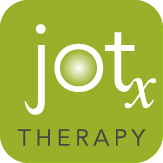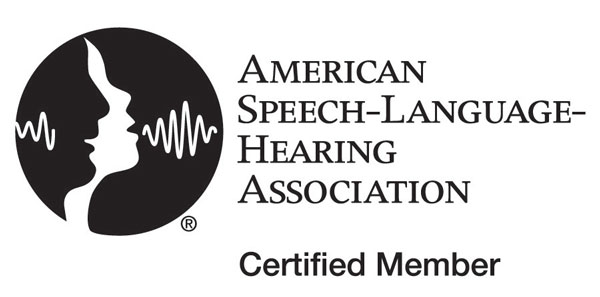We all have to write daily notes. A few find this task enjoyable, most do not. So what is the purpose of the daily note and what needs to be included in our notes for reimbursement for services? There are many reasons we write daily notes. We write notes for record keeping, to objectively track progress, for interdisciplinary communication, for reimbursement; really, for a variety of reasons based on any combination of factors. While reimbursement is only one of them, it is an important one. For the most part, if you have satisfied the requirements for reimbursement, then your documentation is likely sufficient for everything else.
When submitting daily notes for reimbursement, whether it is within a medical setting or when submitting to Medicaid for a student, the notes go to a billing clerk who may or may not know about therapy. They do, however, have a list of rules about the criteria for paying for services. If your documentation has been requested, this clerk is looking to see that you have followed the rules for billing reimbursement.
According to the Medicare Benefit Policy transmittal 52, June 30th,2006 these are the requirements for daily note documentation:
“Documentation is required for every treatment day, and every therapy service. The Treatment Encounter Note must record the name of the treatment, intervention, or activity provided, the time spent in services represented by timed codes, the total treatment time (including the untimed code services) and the identity of the individual providing the intervention. The format may vary depending on the therapist and the clinical setting.”
“Documentation of each treatment encounter will include the following required elements:
• Date of treatment;
• Total timed code treatment minutes and total treatment time. The amount of time for each specific intervention/modality(activity) provided to the patient is not required, as it is indicated in the billing, but the billing and the total timed code treatment minutes must be consistent. Identification of each specific intervention/modality provided and billed, for both timed and untimed codes. Frequency and intensity of treatment and other details may be included in the plan of care and need not be repeated in the treatment encounter notes unless they are changed from the plan; and
• Signature and professional identification of the qualified professional who furnished or supervised and list of each person who contributed to treatment during that encounter (i.e., the signature of Kathleen Smith, LPT, supervisor, with notation of the assistance of Judy Jones, PTA, when permitted by state and local law).“
Daily notes are therapist’s way of recording each encounter with an individual and demonstrating that skilled intervention took place. The notes must demonstrate quantifiable progress toward a functional skill. You are not required to have an elaborate assessment, detailed plan, or detailed inventory of the non-billable services that you provided in your daily notes. These things are just a bonus!
If you decide to add or change a goal in between progress reporting periods, you need to include a statement of why you did that. For example, the original plan was for speech sound production, expressive language production, and problem solving. The individual is having difficulty identifying problems. So, you decide to add a goal for identification of non-verbal communication of facial expressions to address recognition of when a social problem is occurring. Another example might be that the articulation goal has been met and you are advancing to a higher level of linquistic complexity. Your justification can be a short statement as long as it is clear why the change is needed.
The following things are optional for daily notes, although it is good to include them as they happen for our colleagues benefit, and they need to be in the progress summary if they are not in the daily notes. I like to report them as they happen in my daily notes:
- Patient self-report;
- Adverse reaction to intervention;
- Communication/consultation with other providers (e.g., supervising clinician, attending physician, nurse, another therapist, etc.)
- Significant, unusual or unexpected changes in clinical status;
If you include the requirements for a Progress Summary in your daily note, you do not need to create an additional document. These are the requirements for a Progress Summary that you can also include in your daily note:
- Must provide Justification for Medical Necessity
- Must provide objective measurable data
- Assessment of progress toward each goal
- References to modifications to approach or plan of treatment if appropriate
- Current levels for goals (including prior level and target level of function)
- Goals need to be numbered or lettered so that they are easily identifiable from one report to the next.
- Completed long term goals can be deleted.
- Short term goals can be added, deleted, or changed as needed.
*The clinician (not an assistant) must provide treatment at least once every 10 days and sign the progress report, unless there is an unexpected discharge.
If a time interval for the treatment is not specifically stated, it is assumed that the goals refer to the plan of care active for the current interval of treatment. If a body part is not specifically noted, it is assumed the treatment is consistent with the evaluation and plan of care.
You can use JOTx therapy to document your progress summary every session if you include numbered goals containing prior level of function, target level of function and current level of function (this will copy into your plan automatically if you have entered them once) and add detail to your assessment section regarding medical necessity of services, progress toward each goal, and justification for modifications to your approach if you have done that. I include the session number on all my notes as well, but apparently this is not required.
In general, state Medicaid services and local insurance carriers also adopt the Medicare rules, although it is always best to check your own state requirements.
Writing a concise, yet complete daily note can be a challenge for even the most seasoned therapist. It can be beneficial to review the requirements from time to time as a reminder and to stay on top of the latest changes.
Happy Documenting!




